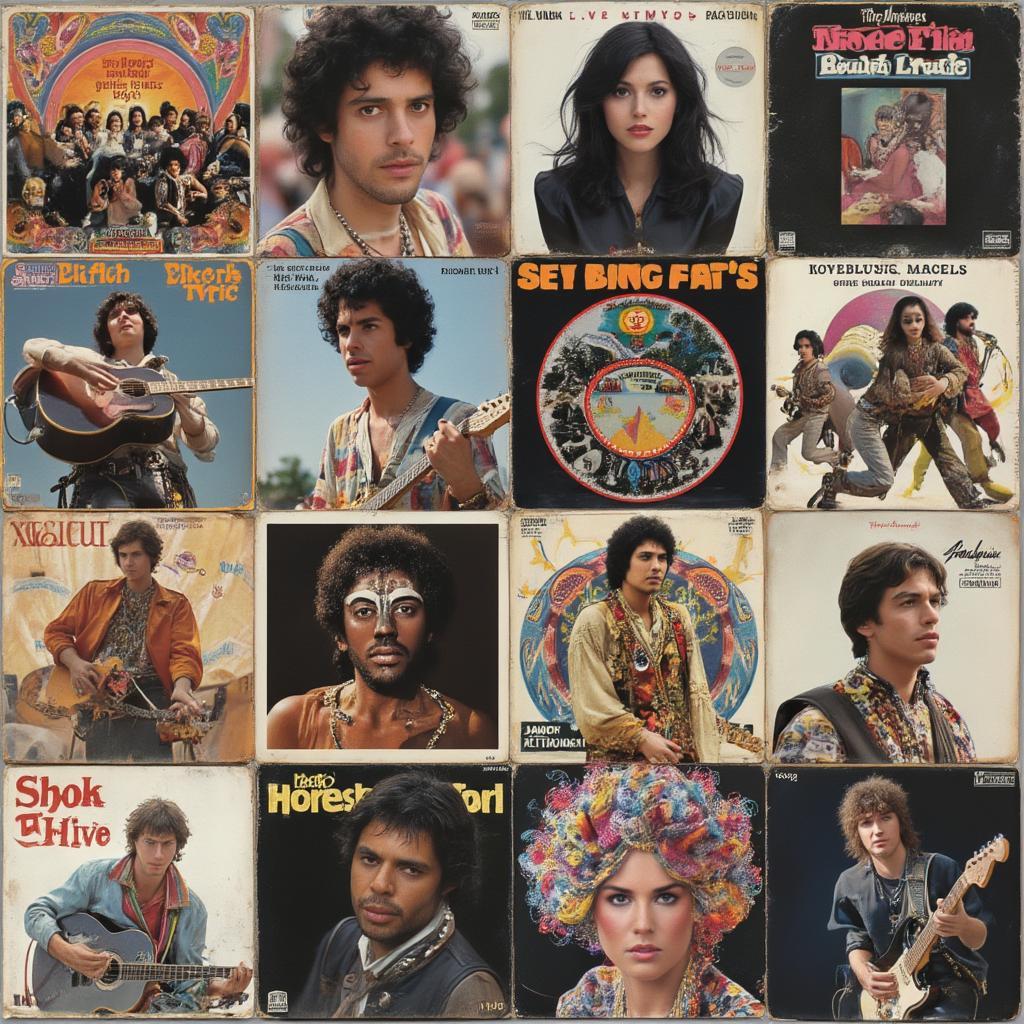Oldies But Goodies Gospel Songs: A Soulful Journey Through Time

The world of music is vast and varied, but few genres possess the timeless appeal and spiritual depth of Oldies But Goodies Gospel Songs. These aren’t just tunes; they’re soulful narratives of faith, hope, and love that have resonated across generations. From the powerful vocals to the heartfelt lyrics, these songs provide a unique window into the past, offering comfort and inspiration that remain relevant today. Let’s embark on a journey to rediscover the magic of these classic gospel anthems. You can also play oldie but goodies music to enhance your reading experience.
What Makes Oldies Gospel So Enduring?
The staying power of oldies gospel music isn’t accidental. Several factors contribute to its enduring popularity and why these songs are still cherished:
- Emotional Depth: These songs are rooted in genuine emotions of joy, sorrow, and unwavering faith. They speak to the human experience in a profound way, fostering a deep connection with listeners.
- Spiritual Resonance: Gospel music is, by its very nature, spiritual. It’s music with a message, often drawing from biblical stories and themes, providing a sense of solace and encouragement.
- Musicality and Vocals: The raw talent and powerful vocals found in these recordings are truly unmatched. They often feature rich harmonies, soulful solos, and passionate delivery.
- Nostalgic Appeal: For many, oldies gospel songs are associated with cherished memories of family gatherings, church services, and simpler times. They evoke a sense of nostalgia and comfort.
- Simplicity of Message: The messages in these songs are often straightforward and universally understood, focusing on faith, love, and hope. This simplicity allows listeners to connect with the music on a personal level.
These factors combined create a powerful listening experience that stands the test of time. The oldies gospel sound is a unique blend of the spiritual with the musical artistry.
Key Artists and Their Contributions to Oldies Gospel
The genre of oldies gospel is brimming with talented artists who have shaped its sound and legacy. Here are some of the most influential:
- Mahalia Jackson: Known as the “Queen of Gospel,” Mahalia Jackson’s powerful voice and moving interpretations of songs like “Move On Up A Little Higher” and “Take My Hand, Precious Lord” are iconic. Her impact on the gospel world is immeasurable.
- The Soul Stirrers: This group, which once featured the legendary Sam Cooke, brought a raw energy and soulful flavor to gospel music with tunes like “Peace In The Valley.” They were influential in shaping the sound of later R&B and soul music.
- The Staple Singers: Led by Roebuck “Pops” Staples, this family group had an unforgettable blend of folk, R&B, and gospel. They are known for classic tracks like “I’ll Take You There” and “Respect Yourself.” The Staples Singers brought a sense of social awareness to their spiritual messages.
- Sister Rosetta Tharpe: Often considered the “Godmother of Rock and Roll,” Tharpe brought infectious energy and amazing guitar playing to gospel music, paving the way for rock and roll with classics like “Up Above My Head” and “Strange Things Happening Every Day”.
- The Five Blind Boys of Alabama: This group is renowned for their incredible harmonies and dynamic performances. They are particularly famous for their passionate delivery of classic gospel songs. Their rendition of “Amazing Grace” remains one of the most haunting and beloved of all time.
These artists, and many others, have contributed to the rich tapestry of oldies gospel, leaving behind a legacy of timeless classics. To dive deeper into the sounds of this era, you can explore oldies music 50s and 60s.
The Evolution of Oldies But Goodies Gospel Music
Gospel music, much like other musical genres, has seen many changes and innovations across the decades. The oldies gospel of the 50s, 60s, and 70s is particularly special due to specific characteristics that make them instantly recognizable and beloved:
- 1950s: Gospel music in the 1950s was heavily influenced by the spirituals and blues of earlier generations. This period saw the rise of powerful vocalists like Mahalia Jackson, who brought a new level of emotional intensity to the genre. The emphasis was often on raw talent and heartfelt performance with simple instrumental arrangements.
- 1960s: The 1960s brought a greater fusion of styles, including the rise of gospel-infused soul. Artists began to incorporate elements of rhythm and blues, creating a more dynamic and modern sound. Groups like the Staple Singers helped bridge the gap between gospel and popular music.
- 1970s: By the 1970s, gospel music had become more diverse and incorporated even more contemporary elements. This era saw the emergence of more funk and soul-influenced gospel, expanding the boundaries of the genre while maintaining its core spiritual message. The focus shifted to larger production with the inclusion of more musical instruments.
The Importance of Songwriting in Oldies Gospel
Songwriting in this era was crucial. Many oldies gospel songs were written by the artists themselves, drawing from their own experiences and beliefs. The lyrics often featured themes of perseverance, hope, and divine love. The songwriters carefully crafted their messages to resonate with the listener’s inner spirituality. According to musical historian, Dr. Alistair Finch, “the beauty of oldies gospel resides not only in its performance, but also its poignant and sincere lyrical content.”
Timeless Themes and Messages in Gospel Oldies
The message in the music is as important as the sound. Oldies gospel songs are not just beautiful melodies; they’re filled with messages that are powerful and uplifting. Here are a few common themes:
- Faith and Perseverance: Many oldies gospel songs celebrate the power of faith in overcoming adversity. They encourage listeners to remain steadfast in their beliefs, even in the face of challenges. Songs often depict the journey of life and the role that faith plays in enduring hardship.
- Hope and Redemption: The idea of redemption is another key theme. These songs often speak of finding forgiveness and new beginnings, offering a message of hope for a brighter future. This theme of hope serves as a beacon of light for many listeners.
- Love and Community: Love, both divine and brotherly, is a central message. These songs emphasize the importance of compassion, unity, and supporting one another. The songs foster a sense of community, reminding listeners of the importance of togetherness.

The impact of these songs goes beyond the music itself, influencing culture and even social movements. The powerful messages of faith and hope in gospel music during the Civil Rights movement provided comfort and inspiration. To find more inspiring tunes, you might appreciate oldies 50s 60s 70s.
Where to Rediscover Oldies But Goodies Gospel Songs
For those seeking to rediscover or explore for the first time the magic of oldies gospel music, there are numerous ways to access this treasure trove of music:
- Online Streaming Services: Platforms like Spotify, Apple Music, and YouTube have extensive collections of oldies gospel songs. You can create playlists or discover new artists and tracks.
- Vintage Record Stores: Visiting record stores that specialize in vintage music can often lead to discovering rare or hard-to-find gospel records. It’s a treasure hunt for music lovers!
- Radio Stations: Some radio stations dedicate time to playing classic gospel music. Tune in to catch your old favorites or discover new tracks.
- Community Events: Keep an eye out for local gospel music festivals, church services, and other events that may feature the oldies gospel sound.
- Online Archives: There are many online archives and databases that preserve and share old recordings. These platforms are amazing resource tools for researchers and enthusiasts alike.
Modern-Day Relevance of Oldies Gospel
Despite being decades old, the themes and messages in these oldies but goodies gospel songs remain relevant today. They offer timeless wisdom, comfort, and inspiration to people from all walks of life. According to music professor, Dr. Eleanor Vance, “The beauty of oldies gospel is not just in its history, but in how it resonates with contemporary listeners seeking solace and spirituality in a chaotic world.”
The Lasting Legacy of Oldies Gospel
The influence of oldies gospel music extends far beyond its immediate listeners. It has shaped the development of other genres, including soul, R&B, and even rock and roll. Many iconic artists have credited gospel music for shaping their musical styles and approaches. The raw emotion and passion found in oldies gospel can still be heard in many contemporary forms of music. This is a testament to the genre’s timeless appeal and artistic merit. Listening to oldies music non stop allows one to fully appreciate this legacy.
The legacy of this music lives on, with new generations continuing to find comfort and inspiration in its timeless message of faith, hope, and love. The sounds of the past continue to resonate in the present.
Conclusion
Oldies but goodies gospel songs represent a vital part of musical history. These songs are more than just music; they are an embodiment of spiritual expression and timeless messages that continue to touch our hearts and souls. They serve as a reminder of our shared human experiences and the power of faith to guide us through life’s journey. The legacy of oldies gospel is one that will continue to be celebrated and cherished for generations to come. The rich history and spiritual depth of oldies but goodies gospel songs offer a unique and rewarding listening experience for music enthusiasts of all kinds.
FAQ: Exploring Oldies But Goodies Gospel Songs
Here are some frequently asked questions about oldies but goodies gospel songs:
-
What exactly is meant by “oldies gospel?”
Oldies gospel refers to gospel music recorded primarily from the 1950s through the 1970s. This era featured a distinctive sound, with powerful vocals, heartfelt lyrics, and a strong spiritual focus. These songs are often associated with specific styles and artists from that time. -
Who are some of the most influential artists in oldies gospel music?
Key figures include Mahalia Jackson, The Soul Stirrers, The Staple Singers, Sister Rosetta Tharpe, and The Five Blind Boys of Alabama. These artists and many more have profoundly shaped the sound and legacy of gospel music from this era. -
What are the common themes found in oldies gospel songs?
These songs often explore themes of faith, perseverance, hope, redemption, and love. The lyrics provide encouragement and solace, often drawing inspiration from biblical stories and experiences. They speak to the human condition in profound ways. -
How has oldies gospel influenced other genres of music?
Oldies gospel has significantly impacted genres like soul, R&B, and even rock and roll. Many artists credit gospel music for shaping their vocal styles and musical approaches. The emotional depth and passionate delivery of oldies gospel has been a major influence. -
Where can I find recordings of oldies gospel songs?
You can find these songs on streaming platforms such as Spotify and Apple Music, at vintage record stores, and on specialized radio stations. There are also various online archives dedicated to preserving these classic recordings. -
Why are oldies gospel songs still so popular today?
Their enduring appeal comes from their deep emotional resonance, spiritual messages, and the raw talent displayed in each performance. For many, these songs also evoke nostalgia and memories of simpler times, making them both timeless and comforting. -
What makes the vocal performances in oldies gospel so unique?
The vocal performances of this era are characterized by their power, emotion, and often raw delivery. Many singers employ techniques such as melisma and vocal improvisations, creating a highly passionate and engaging listening experience. These vocals truly touch the soul.




